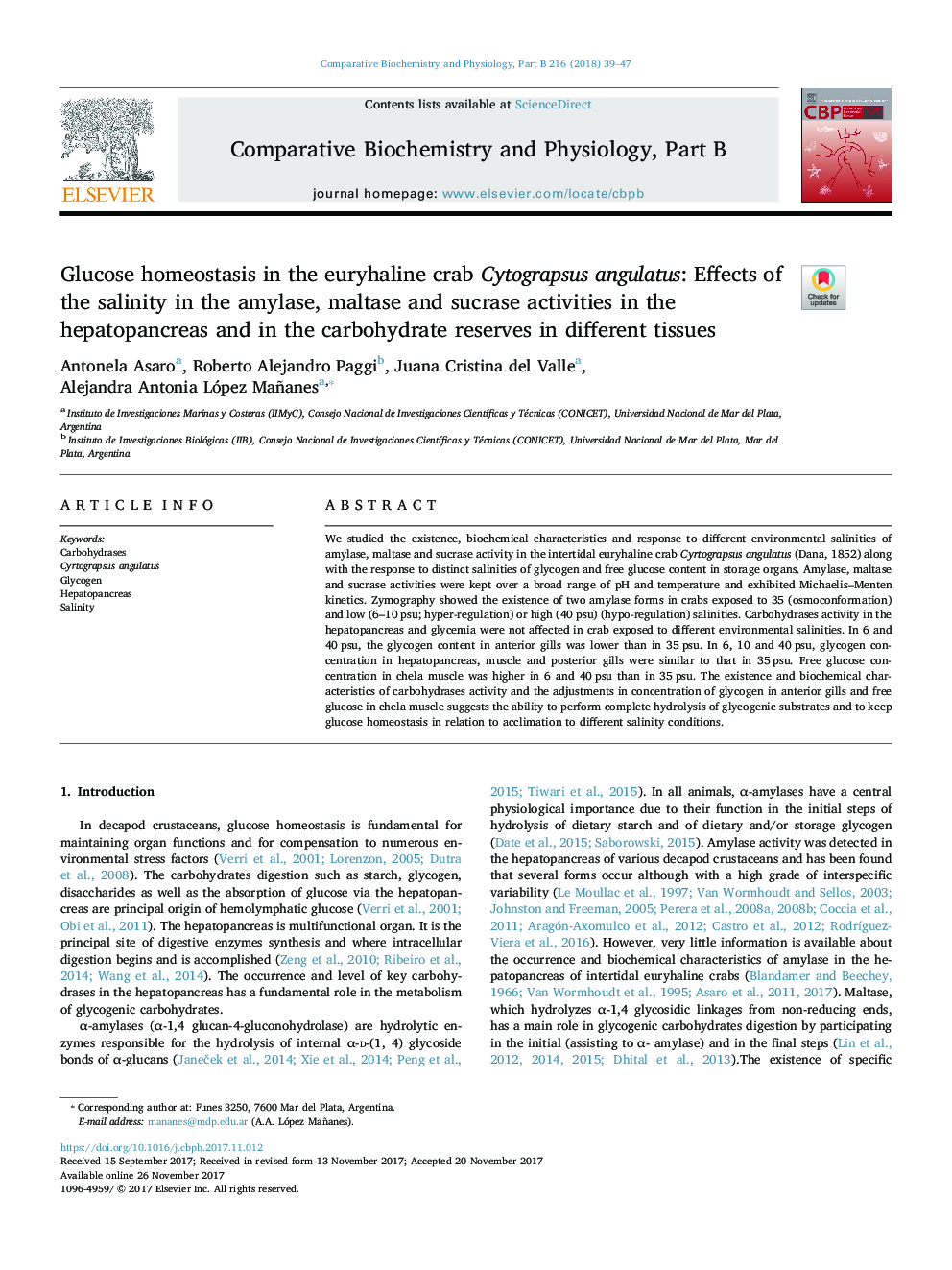| Article ID | Journal | Published Year | Pages | File Type |
|---|---|---|---|---|
| 8318849 | Comparative Biochemistry and Physiology Part B: Biochemistry and Molecular Biology | 2018 | 9 Pages |
Abstract
We studied the existence, biochemical characteristics and response to different environmental salinities of amylase, maltase and sucrase activity in the intertidal euryhaline crab Cyrtograpsus angulatus (Dana, 1852) along with the response to distinct salinities of glycogen and free glucose content in storage organs. Amylase, maltase and sucrase activities were kept over a broad range of pH and temperature and exhibited Michaelis-Menten kinetics. Zymography showed the existence of two amylase forms in crabs exposed to 35 (osmoconformation) and low (6-10Â psu; hyper-regulation) or high (40Â psu) (hypo-regulation) salinities. Carbohydrases activity in the hepatopancreas and glycemia were not affected in crab exposed to different environmental salinities. In 6 and 40Â psu, the glycogen content in anterior gills was lower than in 35Â psu. In 6, 10 and 40Â psu, glycogen concentration in hepatopancreas, muscle and posterior gills were similar to that in 35Â psu. Free glucose concentration in chela muscle was higher in 6 and 40Â psu than in 35Â psu. The existence and biochemical characteristics of carbohydrases activity and the adjustments in concentration of glycogen in anterior gills and free glucose in chela muscle suggests the ability to perform complete hydrolysis of glycogenic substrates and to keep glucose homeostasis in relation to acclimation to different salinity conditions.
Related Topics
Life Sciences
Biochemistry, Genetics and Molecular Biology
Biochemistry
Authors
Antonela Asaro, Roberto Alejandro Paggi, Juana Cristina del Valle, Alejandra Antonia López Mañanes,
